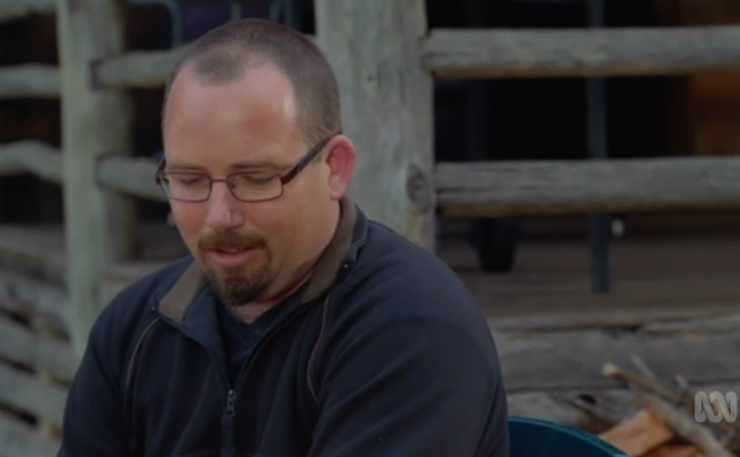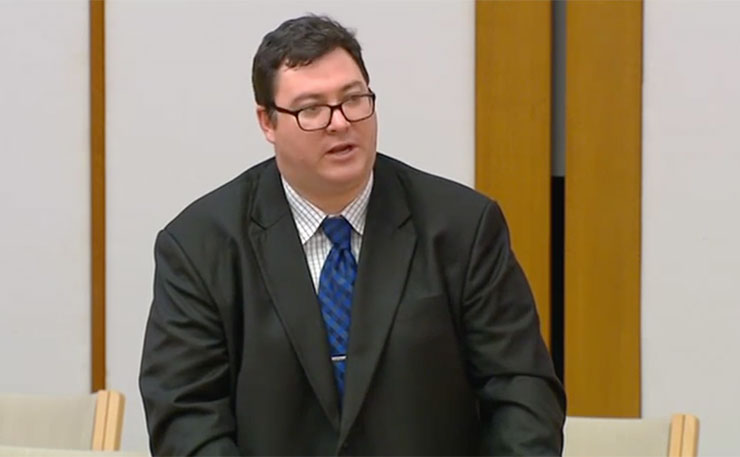Labor is worried about tampering with senate voting and perhaps for good reasons. But with the current system clearly being gamed it’s time for a shake-up, writes Ben Eltham.
“Coalition could clean up if Senate reform is finalised,” screamed the headline in the Sydney Morning Herald yesterday.
Progressive voters reading Heath Aston’s article at one of the Fairfax websites would have been dismayed. “The Turnbull government would seize a rare, absolute majority in the Senate if it finalises a deal on voting reform and calls a double-dissolution election,” Aston predicted.
A Senate controlled by the Coalition would indeed be news. With the numbers in the Senate, the government can pass pretty much any bill it likes. Imagine what Tony Abbott would have done had the Coalition gained the balance of power in the Senate in 2013.
No wonder Labor is worried. Specifically, the ALP is concerned about Senate voting reforms.
The government has been negotiating with Labor and the minor parties to change the current voting system for the upper house. The idea is to prevent the kind of wild-card results that led to the election of Ricky Muir with less than one per cent of Victoria’s first preference votes.
The Senate voting system is famously complex. Hardly anyone understands it completely (we’re looking at you, Antony Green).
For those of you who aren’t politics nerds, the Australian Senate is a proportional representation system in which senators are elected according to the proportion of votes their party receives. Senators need a “quota” of votes to get elected. In a half-senate election where six senators are elected (the normal type), a quota equals 14.3 per cent.
This is straightforward enough. The tricky bit comes with preferencing. On the Senate ballot paper, you can vote in two ways – “above the line” or “below the line”.
If you vote “below the line” you can vote for each and every Senate candidate, in your order preference. I love doing this, because I like democracy and I’m a bit of a nerd. But it’s tedious and time-consuming. Most people don’t bother.
If you vote “above the line”, you simply vote 1 for the party of your choice. Your party then allocates its preferences wherever it likes.
And that’s where the modern plague of “preference whispering” originates. The fact that parties can allocate their own preferences means that minor parties can band together and promise to preference each other, in the hope that one of them will get elected.
If you have enough minor parties with enough cross-preferences, the upshot can be a result like 2013, when Muir was elected with just 17,122 votes.

Muir polled 0.51 per cent of the Senate primary vote in Victoria. How did he end up with a quota?
The answer, again, is preferences. The Senate count proceeds by electing everyone with a clear quota, then allocating preferences. The top Liberal and Labor candidates are elected in the first few rounds (Nick Xenophon typically gets a full quota in South Australia, too).
But then things get interesting. By definition, no party has a full quota for the final Senate seat. So the preferencing begins.
Preference counts knock out the smallest parties first, and their votes are then transferred to the party they nominate. If a large number of micro-parties all preference each other, they can end up combining all their votes and zooming past a Liberal, Labor or Greens candidate into the Senate.
In 2013, for instance, Muir was elected on the back of preferences from parties including the Bank Reform Party, Help End Marijuana Prohibition, the Shooters and Fishers, Senator Online, the Stable Population Party, Bullet Train for Australia, Katter’s Australian Party and Palmer United.
Worse, it seems as though many of these micro-parties were related, or even fronts for a clever operator like “preference whisperer” Glenn Druery or current New South Wales Liberal Democrat David Leyonhjelm. Druery tried to create a minor party alliance in the run up to the 2013 election.
Disaffection with the major parties and the opportunity for preference gaming has spurred an explosion in micro-parties in recent elections, creating bumper fields of Senate candidates.
So minor party reform has focused on the issue of micro-parties and the fecund proliferation of candidates. Should micro-parties be ruled out unless they receive a respectable primary vote – perhaps 1, 2 or 4 per cent?
And should it be more difficult for minor parties to get on the ballot – for example, by raising their party membership requirements to 1,500 members from the current 500?
Currently, there are no firm proposals from the government for Senate reform – they are still negotiating behind the scenes. But The Greens are keen for a system in which voters could distribute preferences above the line.
By numbering 1 to 6 above the line, voters in a half-senate election could themselves mandate where their preferences flow. This takes the power away from “preference whisperers” like Druery to hatch cross-preferencing deals.
Labor is wary. A number of senior Labor figures, including Penny Wong and Stephen Conroy, are reportedly worried that any reforms may end up hurting their party.
That may be true, but that is not a good reason to block Senate voting reform.
In any case, it may not be true. The arithmetic in Aston’s article in Fairfax was quickly shot down by informed observes like Antony Green and Ben Raue. The scare story, it transpired, was based on two party-preferred opinion poll figures, which have almost zero relevance to the Senate.
As I argued in 2013, we should be careful about restricting the franchise for those who want to vote for minor parties. Minor party voting has been rising for decades, as citizens vent their frustrations on the major parties and the current state of our democracy. There is a role for small parties in our democracy: to campaign for issues, to raise awareness, and to offer an alternative for the minority.
The debate about minor parties is often unmoored from reality. Many of the supposedly unrepresentative minor parties senators elected in 2013 actually had healthy first preference votes. Palmer United polled nearly 10 per cent in Queensland – just under a quota. In Tasmania, Palmer United polled 6 per cent. Whatever you think of their performance, Glenn Lazarus and Jacqui Lambie attracted tens of thousands of votes.
There are sound democratic reasons to limit the ability of all the parties to preference game. Party bosses have often struck deals counter to the views of their own voters – Labor preferencing Family First, Wikileaks Party preferencing the Shooters and Fishers, and so on. Democracy is not well-served by Senate ballot papers that resemble fold out road maps. Such bewildering choice can confuse voters dazzled by the array of candidates. It also makes it hard for those who legitimately want to number every box below the line.
Finally, and most pertinently, shouldn’t citizens themselves be the ones to decide where their preferences go?
In a democracy, the majority should rule. Allowing voters to preference above the line strengthens that principle, by increasing the say of citizens in where their Senate preferences go. In this way it should also ensure that the parties with the most votes and most preferences win office.
As Green points out, “under both the current and the proposed electoral system, a party would come close to winning seven Senate seats if its vote was above 50 per cent. This system is proportional representation, and if a party gets more than half of the vote, there is always a reasonable chance it will get a proportionate outcome which is more than half the seats.”
That’s the reality behind Senate voting reforms. In the end, the make-up of the Senate is basically determined by the first-preference votes of the electorate. If a single party wins enough of them, it will control the Senate. And so it should.
Donate To New Matilda
New Matilda is a small, independent media outlet. We survive through reader contributions, and never losing a lawsuit. If you got something from this article, giving something back helps us to continue speaking truth to power. Every little bit counts.






